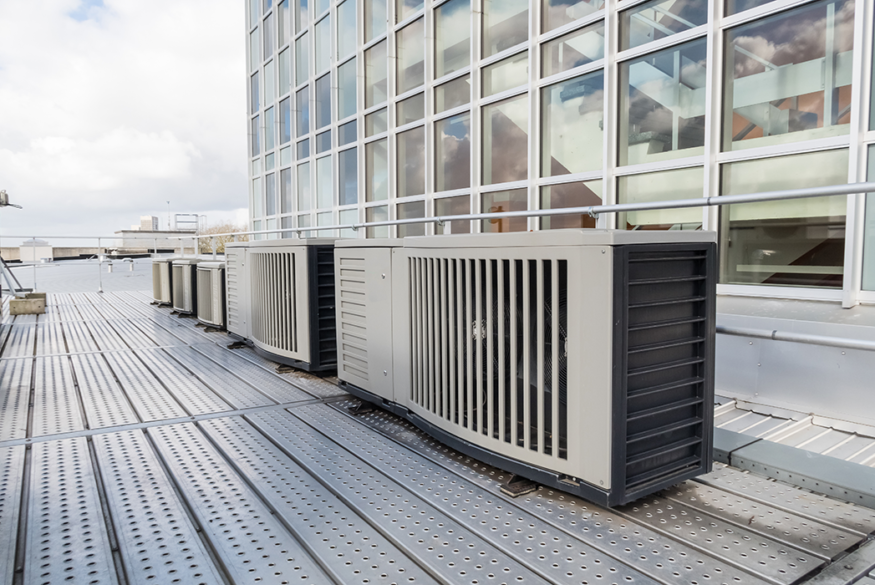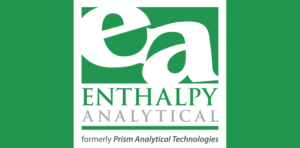TVOCs – Why, How, and Now What?
Indoor air quality (IAQ) verification credits or perhaps occupant complaints may direct your attention to Total Volatile Organic Compound (TVOC) concentrations and ways in which to measure them. You may wonder how real time, continuous readout TVOC devices compare with laboratory services. To get the best understanding we are going to review what TVOC is, how to measure TVOC, and addressing TVOC levels.
Understanding TVOC
A TVOC value is not simply the sum of the individual volatile organic compounds detected in an analysis, there are unknowns that also add to the total. This can be illustrated with a jar full of rocks, pebbles, sand, and the air gaps (unidentified VOCs). The overall total volume of the jar (TVOC) stays the same but the make-up of pieces (VOCs) in the jar can vary greatly. The total VOC could be comprised of 1-5 highly concentrated compounds (rocks), 20-30 compounds of moderate values (pebbles), or 100 compounds of small, insignificant value (grains of sand). A low TVOC usually indicates that there is no VOC problem (unless, of course, the TVOC value is due to a few compounds); however, a high TVOC value may result from a high level on one single compound or it may be a vast collection of low compound levels from a chemical “soup”, or it may be anything in between.
Measuring TVOC
There are several on‐site devices that can do an acceptable job estimating TVOC with the most common being PIDs (Photoionization Detectors). These are especially useful for continuous monitoring or for obtaining real‐time data. However, the use of GC‐FID (Gas Chromatography‐Flame Ionization Detector) or GC‐MS (Gas Chromatography‐ Mass Spectrometry) will provide the most accurate and useful data. For laboratory analysis, passive samplers, Summa Canisters or Thermal Desorption Tubes (TDTs) are used to collect an air sample. Laboratory analysis technology not only allows determination of the TVOC level but can also determine the type and amount of specific chemicals in the air sample. Enthalpy Analytical uses GC‐MS in determining the TVOC value. We have found through the years that the question that immediately follows the reporting of the TVOC level is “Where are these chemicals coming from and what can I do to lower the TVOC level?” From GC-MS analysis, it is possible to use the mass spectral verification feature to do a full analysis of the data without the requirement to take another sample. If the reported TVOC is low, usually no additional analysis is required. However, if the TVOC level is high, a detailed 500+ compound analysis can be requested.

image: Freepik.com
TVOC PELs
Currently there is no specific US standard for the PEL (Permissible Exposure Level) for TVOCs nor is there any specification as to the carbon chain length covered (C1-12, C3-C16, etc.). However, it is still possible to establish reasonable, workable limits until a specific standard is established. LEED (Leadership in Energy and Environmental Design, USGBC) has developed a standard for Green Buildings of <500 ng/L. Research generally seems to agree that <500 ng/L represents an “acceptable” TVOC level and that >3000 ng/L represents a “hazardous” TVOC level; however, few seem to want to address the hazards involved with levels between 500 and 3000 ng/L. Part of this problem rests in the fact that many people enjoy VOCs from perfumes and odorants (cleaning products, scented candles, potpourri, air fresheners, etc.) that increase the background VOC level while other people are not so inclined and may suffer from nausea, headaches, and other symptoms as a result. The recognized symptoms above 3000 ng/L generally include drowsiness, eye and respiratory irritation, general malaise, headache, nausea, and exacerbation of symptoms of respiratory ailments. There is some empirical information from Industrial Hygienist consultants who perform medically driven environmental investigations, which indicates that typically acceptable TVOC levels are too high by a factor of two or more for chemically sensitive individuals.
Remedial Action
Now that your investigation of TVOC values is complete, the values likely warrant some action to be taken. One of the quickest ways to address elevated TVOCs is by introducing fresh air – either by open windows or mechanically through the HVAC system. By flushing out the dirty air, TVOC levels are dropped quickly but do they stay there? Not likely if your building is occupied! Ventilation and make up air are just part of the puzzle. Through GC-MS analysis, Enthalpy Analytical and other labs are able to speciate the chemicals in the air. With this information, your indoor air consultant can begin to “predict” their sources. The VOCs can be categorized by the predicted sources such as “coming from the construction” (the building) or from “activity” (occupant) sources. Through this categorization and identification, the building owners and managers can work with the occupants to locate and remove, or minimize, the controllable sources thus significantly improving the air quality while optimizing the costs incurred for ventilation and energy use. Knowing your TVOC chemicals can pay double dividends!
Sponsored Content by Enthalpy Analytical LLC.










